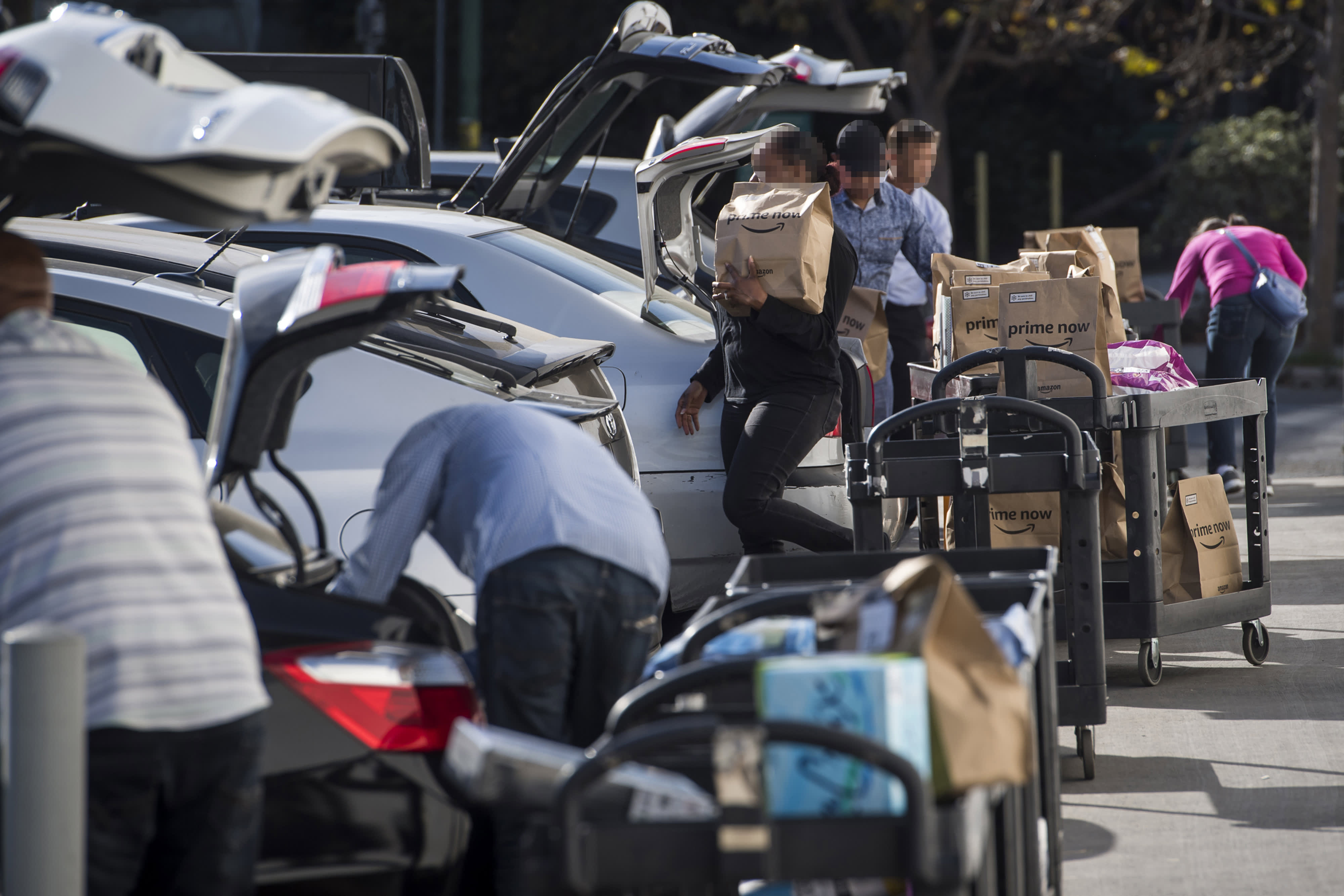Contractors working for the Amazon Inc. Flex program load packages onto vehicles to deliver to customers in San Francisco.
David Paul Morris | Bloomberg | Getty Images
Amazon will pay $ 61.7 million to resolve the Federal Trade Commission’s claims that it did not pay Flex delivery drivers the total amount of tips received from customers.
The commission voted 4-0 in favor of the agreement, which was announced on Tuesday. In the complaint, the FTC alleges that Amazon in 2016 switched from paying drivers the promised rate of $ 18 to $ 25 an hour, plus tips, to pay drivers a lower hourly rate.
Amazon “intentionally failed” to notify drivers of this change and used the tips to make up for the difference between the promised rate and the new lower hourly rate, according to the FTC.
“Instead of passing on 100% of customer tips to drivers, as it promised, Amazon used the money itself,” said Daniel Kaufman, acting director of the FTC’s Bureau of Consumer Protection, in a statement. “Our action today returns to the tens of millions of dollars in tips that Amazon misappropriated and requires that Amazon obtain permission from drivers before changing its tip handling in the future.”
Amazon spokeswoman Rena Lunak told CNBC in a statement that the company disagrees with the FTC’s claim that the payment model for drivers is unclear.
“While we disagree that the historical way in which we report payment to drivers is unclear, we added additional clarity in 2019 and are pleased to leave this matter behind,” said Lunak. “Amazon Flex delivery partners play an important role in serving customers every day, which is why they earn among the best in the industry at more than $ 25 an hour on average.”
Amazon Flex operates similarly to Uber, in which hired delivery drivers take shifts on demand to deliver packages from Amazon or Whole Foods orders to customers’ doorsteps. The service, launched in 2015, uses drivers to deliver orders for their own vehicles and operates in more than 50 cities in the United States
In its complaint, the FTC further alleges that Amazon sought to hide the change in driver policy after receiving hundreds of complaints from drivers who suspected their overall earnings to have declined.
Amazon employees seemed to recognize the risks of how the company handled the change, referring to it as a “smoke box for Amazon’s reputation” and “a huge public relations risk for Amazon,” said the FTC.
Amazon continued to use the new pricing model until August 2019, following the launch of the FTC investigation. The company returned to a remuneration model in which it pays Flex drivers a basic fee, plus 100% gratuity, according to the FTC.
As part of the deal, Amazon is required to pay more than $ 61.7 million to the FTC, which will be used by the agency to compensate Flex drivers. The agreement also prohibits Amazon from falsely presenting any driver’s probable revenue or payment fee, how much of their tips will be paid to them, as well as whether the amount paid by a customer is a tip. Amazon is also prohibited from making any changes to the way in which driver tips are used as compensation without first obtaining drivers’ consent.
The deal comes as the on-demand delivery services DoorDash and Instacart have also attracted public scrutiny for their tipping practices.
Last November, DoorDash reached a $ 2.5 million settlement with the District Attorney General for the District of Columbia over allegations that it misled consumers and pocketed workers’ tips. Washington, DC’s attorney general, Karl Racine, announced charges against DoorDash after his office found that the company used tips from customers to offset the minimum payment due to workers. DoorDash said in 2019 that it changed its tipping model.
Similarly, Racine in August last year filed a lawsuit against Instacart, claiming that the company deceived customers into thinking that an optional service fee would be charged as a tip for workers and pocketed itself.
